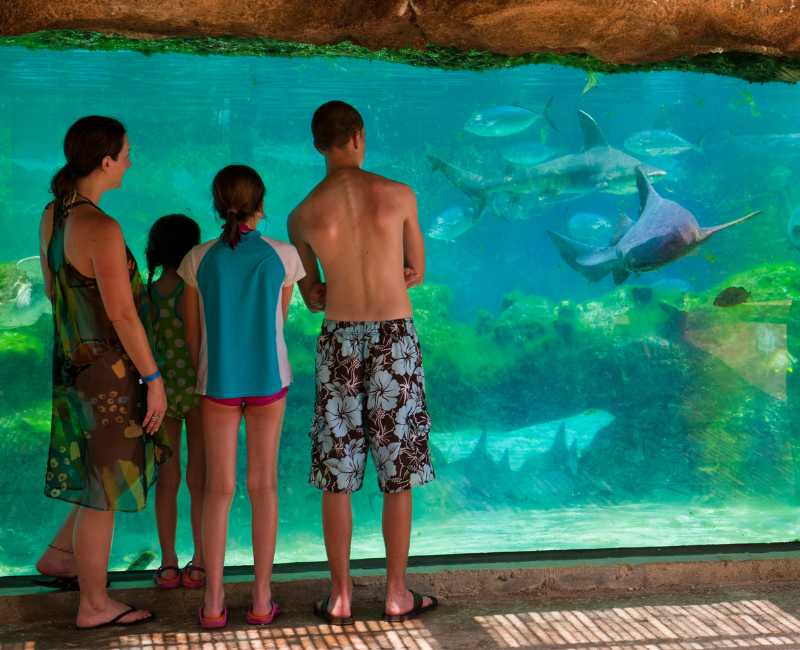Do not refresh or close this window.

Do not refresh or close this window.


Share
Marine predators are vitally important to the health of our oceans, and our spectacular Predator Reef exhibit gives visitors the chance to see some of the most important Caribbean predatory fish, and how they interact with one another, from the safety of dry land.
You can choose to observe our nurse sharks, fierce barracuda, snappers, jacks, and our large tarpons, from the walkway or viewing window, or, if you are feeling adventurous, from the underwater windows in our Breakers Lagoon and Turtle Lagoon.
Everything in the ocean, just like everything in life, has a place and a purpose. Each of the 400 different species of shark that swim throughout the world’s oceans is uniquely adapted to fulfill an important role. Research shows that marine food chains don’t just work from the bottom up, they also work from the top down. Apex predators such as sharks help remove diseased, sick, and injured fish from the marine ecosystem help to keep fish, and the reefs and seas they inhabit, healthy and reduce the spread of disease.
While many people think of sharks as being very fierce and dangerous animals, throughout the world, shark attacks are really very rare. In fact, you have much more chance of being bitten by a pet dog than you do a shark. However, sharks are certainly in danger from human beings, millions of sharks are killed each year for the shark-fin industry. Pollutants threaten sharks, as they do all marine life, so you can help protect them by picking up plastic items from the shore, or by reusing and recycling.
All sharks are designed for the world they inhabit, but they all share some common features, such as a big, vertical tailfin, dorsal fin, and pectoral fin. Their fins make them super-efficient for swimming and hunting. Instead of a bony skeleton, like most other fishes, sharks have flexible cartilaginous skeletons that enable them to twist right round, in the blink of an eye, to catch a fish, instead of turning their whole body right around like a bony (teleost) fish does. Their small scales are small, embedded in the skin, and provide streamlining, help sharks to swim quickly and efficiently through the water. Their teeth contain plenty of dentine, are ultra-hard and sharp, and keep on being replaced throughout a shark’s lifetime
Freddy and Buca are the names of our two nurse sharks and their weekly feeding times are very popular with our visitors. Most sharks must keep swimming with their mouths open in order to keep a steady stream of oxygenated water pumping over their gills, but nurse sharks are different. In addition, nurse sharks are one of the few shark species that can breathe whilst sitting still due to specialized buccal muscles in their mouths which maintain water flow by pumping water in through their mouth and over their gills. Due to this special breathing method, Freddy and Buca are often seen resting on the bottom of their Predator Reef home. The mouths of nurse sharks are designed for bottom-feeding. They mainly feed by creating a suction, one strong enough to pull a queen conch straight from its shell and using their very small teeth for crushing and grinding crustacean prey.